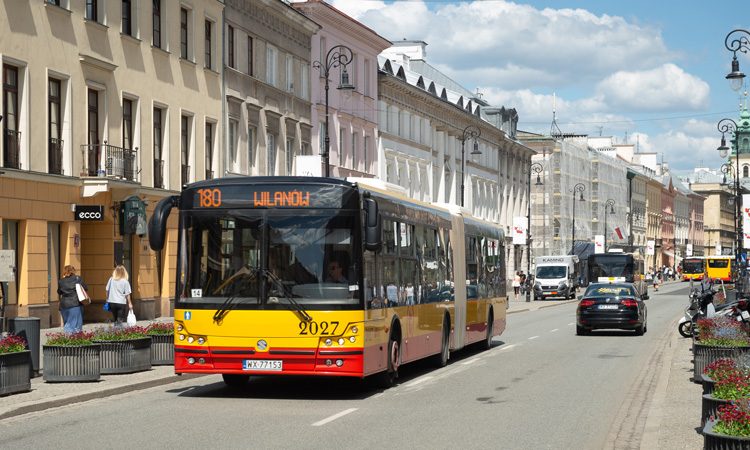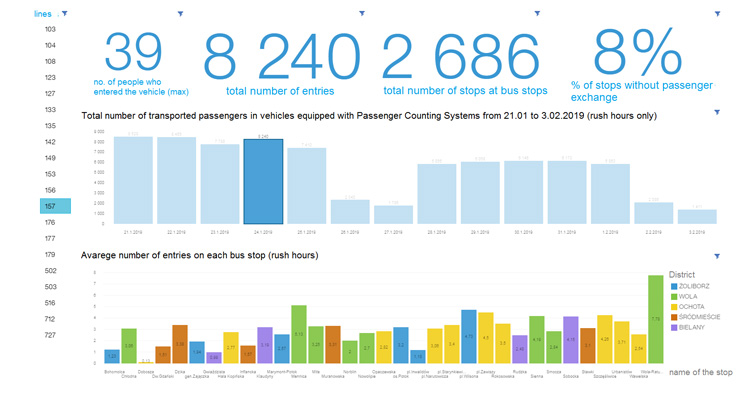Reaping the benefits of intelligent transport systems in Warsaw
- Like
- Digg
- Del
- Tumblr
- VKontakte
- Buffer
- Love This
- Odnoklassniki
- Meneame
- Blogger
- Amazon
- Yahoo Mail
- Gmail
- AOL
- Newsvine
- HackerNews
- Evernote
- MySpace
- Mail.ru
- Viadeo
- Line
- Comments
- Yummly
- SMS
- Viber
- Telegram
- Subscribe
- Skype
- Facebook Messenger
- Kakao
- LiveJournal
- Yammer
- Edgar
- Fintel
- Mix
- Instapaper
- Copy Link
Posted: 4 June 2019 | Jakub Stefaniak | No comments yet
Digitalisation has taken hold of public transport operations around the world and data is the asset driving change across the industry. In an exclusive interview, Jakub Stefaniak, Head of the Department of Analysis at the Public Transport Authority of Warsaw, explains how the implementation of ITS and the collection and analysis of data has transformed transport management in the Polish capital.


What role is data playing in the modernisation of transport in Warsaw?
How is this data collected and how is it being utilised? Over the last few years, PTA Warsaw has focused extensively on the development of ITS systems within the organisation. To begin with, it was necessary to properly equip all of our operators’ vehicles and for the data collected by them to be available to the PTA both online and offline. Vehicles of all private operators (contracted after a tendering process) now allow online review of monitoring records, online preview of passenger exchanges at stops or transfer of GPS position in a five-second cycle. In addition, the PTA also obtains ticketing data from ticket machines in vehicles and ticket validators.
Alongside the activities undertaken in cooperation with the operators, a vehicle position management system was developed to improve the daily management of public transport. This system, initially prepared for the internal purposes of the PTA, has also been made available to operators. It allows, among other things, the position of all public transport vehicles to be accessed online, as well as recording all events that affect the functioning of public transport. It should be noted that this newly created system is another step taken toward ITS in Warsaw. In the 1990s, a system was created based on GPS tram traffic monitoring, which enabled the punctuality of vehicles to be assessed. We are currently trying to implement a similar system for all buses.
The existing ITS foundation thus provides the PTA with a multitude of data that can also be used by another data system that is currently being implemented: a data warehouse. Its purpose is to combine data from cooperating companies and operators, as well as internal systems of the PTA, in order to carry out analysis.
Work on the data warehouse system began in 2015 by analysing the needs of the entire organisation. In the following years, work was undertaken preparing the source systems for inclusion in the data warehouse and building the system from scratch. Part of the first section of the system commissioned in the last quarter of 2018 facilitates analysis of the following:
- Use of vehicles
- Use of metro stations, based on data generated by gates at stations (in Warsaw all stations have this type of infrastructure)
- Use of tickets (based on data from ticket validators)
- Ticket sales
- Reports and passenger complaints
- Registration of traffic dispatcher
- Data from ticket inspections.
An important element of this work is to provide good quality data and high credibility. For this reason, they are verified before being made available in the data warehouse. For example, in the field of ‘use of vehicles’ analysis, all private operators deployed in Warsaw in recent years have needed certification of their passenger counting systems. The company iris-GmbH provided system accuracy of more than 97 per cent as required by the PTA. This accuracy is also confirmed during cyclic verification. Such highly reliable operation of the system allows the PTA to conduct reliable analyses to optimise the transport system of Warsaw, adjusting the supply of vehicles to optimise routes or schedule journey times.


How important are intelligent transport systems to keeping urban transport running efficiently in Warsaw?
Such systems are the basis for effective transport management. Prior to the millions of records provided by ITS, both the planning and settlement stages were based on small data samples. It was not possible to take into account all the variables influencing passengers’ interests (e.g. weather) and simple and quick settlement with operators. In addition, it was previously very difficult to adjust supply and travel times between stops, when all activities were carried out on paper cards which took up employees’ time, with low efficiency of collected data. Now, we can cope with that.
The next – very important – step in the development of applied ITS systems in Warsaw is the preparation of a system that enables automation of the operators’ settlements process.
The ITS systems being implemented already improve passenger offerings and optimise costs.
Outside of these technologies, how else are you continuing to modernise Warsaw’s transport operations?
One of the biggest challenges in Warsaw is reducing pollution. In Warsaw, this task is mainly connected with the replacement of rolling stock with a more ecological version. Operators mainly own diesel buses with EEV standards, but greener vehicles are gradually being purchased. Currently, passengers can use 70 hybrid, 30 electric or 74 gas (LNG and CNG) buses. In the coming months the fleet will be largely powered by ecological vehicles – 110 MAN CNG buses, 130 Solaris electric buses, as well as 54 articulated Solaris CNG buses. Purchased vehicles will account for 20 per cent of the total buses used.
Furthermore, the Warsaw Tram Company is close to signing a contract for the supply of 213 new Hyundai trams. This will mean that 100 per cent low-floor rolling stock will be used in Warsaw. Our goal is a reduction of pollution levels and to gain new passengers.
Biography
Jakub Stefaniak is a graduate of the transport faculty at Warsaw University of Technology. He has been an employee of the Public Transport Authority of Warsaw since 2010 and is currently Head of the Analysis Department, which is also responsible for the correctness of passenger counting systems. In 2015 he became the project manager of the data warehouse implementation project at ZTM, which is scheduled to end in 2020.
Related topics
Intelligent Transport Systems (ITS), Multimodality
Issue
Issue 2 2019
Related cities
Poland
Related organisations
Solaris, Warsaw University of Technology, Zarząd Transportu Miejskiego (ZTM)








